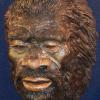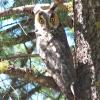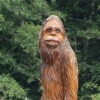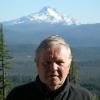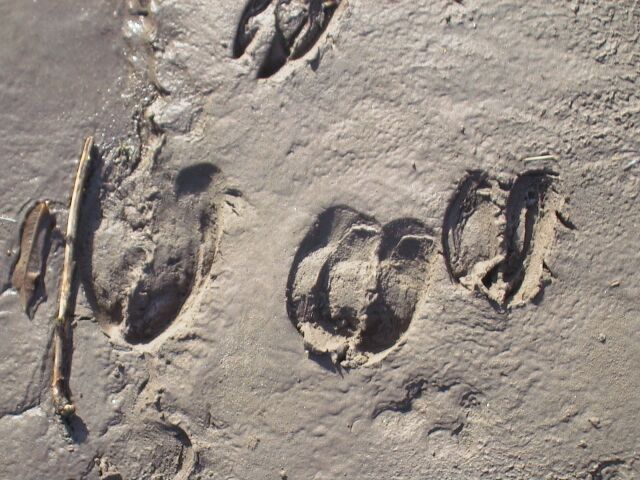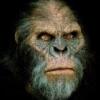Leaderboard
Popular Content
Showing content with the highest reputation on 03/24/2017 in all areas
-
The mental picture I got of the area around the cast was dry according to Thom Powell's account. The fruit was placed in the center of a drying up mud hole. Meaning approach to the spot without leaving tracks would have been fairly easy except near the center of the mud hole. As many here have brought up, no elk tracks in the center of the lay is very telling that it wasn't an elk. I mentioned hair patterns as Joe mentioned above near the beginning of this thread. Elk hair patterns should have been fairly easy to determine. Don't fall into the erroneous idea that bigfoot leave tracks everywhere they go. If we are walking through an area and not leaving any tracks, bigfoot probably wouldn't either. You would be very hard pressed to track a bear very far through the forest in the PNW. The same holds true with any animal with padded feet. You will find an occasional track in the dust or a soft spot now and then but that's about it. If the skookum cast was surrounded by dry ground it would be hard to find tracks of anything but elk.2 points
-
If you are calculating that all BF are 800lbs, you are likely way off. A honey hole / Oasis will have all sizes and ages.1 point
-
WSA you very well could be right. If we take archaeological reports from the Mississippi mount builder culture at face value, and hypothesize that the large skeletons found there were first of all BF and secondly were coexisting with humans during that period, one event happened which might explain BF behavior. The Mayan invasion is thought to be the end of the Mound Culture. One Mount culture burial site had large skeleton humanoids laid out with human size bodies in an apparent burial after a massive battle. It appeared that both were fighting on the same side with a common enemy. Mayans killed or captured enemies they encountered during their expansions. Since it is unlikely the small statured Mayans could have captured BF size tribes, what they could not kill outright, probably scattered to the winds avoiding the marauders. The Mound builders were studied by Smithsonian types and suddenly that research came to a screeching halt. The Mound Builders had an advanced new world culture, studied astronomy, predicted astronomical events, had pyramids, and one would think that North American Scientists would be interested in studying that. But it appears to me that something found shut that down. That Mound Culture flies in the face of the Manifest Destiny policy the Smithsonian supported, that Native Americans were nomadic hunter gatherers who had no real ties to real estate. Heaven forbid that the Mound Culture peoples rivaled the Mayans and perhaps the Egyptions much earlier. Throw in a giant people, religious beliefs at the time, especially within the Smithsonian staff, and you have something that the Smithsonian and the US Government did not want to be known. Archaeologists will travel half way around the world to study ancient civilizations in Egypt and ignore something similar in there very own back yard?. Why is that? Does study of the Mound Culture lead to BF? Is that the reason the Government refuses to acknowledge existence of BF? Does a big lie of Manifest Destiny in the 1800s lead to cover up since? Does present day discovery of BF lead backwards to the big lie and cover up in the 1800s? Would the public or scientists demand to know what happened to all the big skeletons? You can be sure they were examined and lab notes created at the time. Are they hidden away in the bowels of the Smithsonian? Or have they been destroyed? All of that is my personal conjecture, based on history, and what is known. Did BF for long periods in time live in harmony with the Native American people? Did that change with the Mayan invasion, and the soon to fallow European migration of firearm toting white people? Did the human BF equation change from trade and cooperation to one of constant conflict with the European settlers? After all, the Native American culture was under the same pressures at the same time. Armed European origin settlers were hell bent on destroying the Native Americans too. Native Americans in most cases fought back. Was the BF solution just to fade back into the woods and disappear, upon seeing the Native American solution was not working? And then there was the introduction of disease with little or no immunity within the Native American peoples. BF had to have watched as whole Native American tribes died off and perhaps made the connection of white men and disease. If you were a sentient being and watched all of this happen over several hundred years, perhaps you would avoid contact with human beings at all cost too? Is their present recluse behavior simply a manifestation of their tribal oral history? I don't blame them if it is.1 point
-
Not really much related to this topic, but on the note about Park Rangers/officials/etc being "wrong" about certain animals in certain habitats, many years ago in my youth on a trip with my parents, we drove to the highest point you could get to (by vehicle) of a well known mountain in the pacific NW. We got up there and were listening to the Rangers talk about the mountain and mountains around the area. Someone asked about bears, and the Ranger said they had not had bears or any report of bears in the area for many decades - there weren't bears in the area according to the Ranger. We found that strange, but whatever, it made everyone feel safer maybe, I dunno. We left, and not but a mile or two down the road from where the Ranger said there were absolutely no bears, lo and behold a black bear mother and two cubs walk right into the road in front of us. I remember mom and dad talking about driving back up to inform the Park Ranger of their erroe, but they didn't. We all still recall that story vividly to this day. Just a funny anecdote i guess.1 point
-
I wouldn't be too sure their impact is measurable and detectable on an environment. Obviously they would eat, but what they eat and where could be quite diverse. Add in the fact that what they eat now is attributed to either some other predator or a natural mortality rate of it's prey. The rate of reproduction of it's prey could be skewed by their presence as well, all hidden in the data, because we don't account for them being there in the first place. I don't believe they would have to ravage a particular area to stay within a 100 square mile range which is only 10x10 , particularly if the area is uninhabitable by people like in flood zones or riparian forests along waterways down here.1 point
-
A very relevant question indeed. I know that when very old dna is sequenced like at Max- Planck Institute, they are very careful to have each new segment done about thirty times from independent labs as they build the genome. Contamination is of great concern, especially when attempting this on a species so similar to the one that collected the sample. Degradation is also a problem ofcoarse, but fresh viable samples should be much easier to simply wash contamination away and get a read on the true donor of hair or flesh.1 point
-
Hello P-G & Starchunk: False hope is all we have to work with, aside sightings, DNA, photographs, tracks, feces analysis, hair analysis, historical records, etc. What it comes down to is: "Are you sure there are no type specimen's?" Notice, I'm not saying "there are no type specimens." The real question is, "where are they?" Anyway, back to topic: As far as an elk lay, I was so familiar with the area that on Sunday after the find, I was at Thom Powell's house. Matt Moneymaker was there. A big topo map was on the wall. After hearing a description of the find ... and seeing no pictures ... I pointed to the exact spot where the cast was made. That means I've spent days and days and nights and nights up there, often watching elk, especially through binoculars. I've also spent considerable time at the National Elk Refuge in Jackson Hole, Wyoming. And, I grew up on a ranch. So, I'm fairly familiar with how four legged grass / shrub eating animals behave. If I thought the Skookum Cast was an elk lay, I won't read this tread or support the claim. The simple fact is, all else discarded, there are no elk hoof prints anywhere near where they should be from a rising elk, in the cast or pictures taken on site. Something else had to have made the impressions. Comment: While there is always elk hair in a herd area, mainly it's on shrubs and trees where elk and cows rub, or on the ground in spring when they shed. Generally in the fall not a lot of hair on the ground from cows or elk, that' I've noticed. Anyway, you are right. "False hope," so far, after 24 years, still false hope. Keep in mind I spend money, lots of money on field research. All I've got for it so far are good, healthy times in the high country, my book The Oregon Bigfoot Highway, and a few valued friends. And, I get to wonder about why people who think "false hope" would waste time on Bigfoot. Maybe you know something you are not sharing. Well, in finality, I do respect your commentary.1 point
-
Yep, but unless it learned to levitate, that's not an elk 'cause it didn't leave tracks. Elk do that, y' know ... leave tracks. You, personally, might not know enough about elk, so perhaps you are positioned to honestly make a plea from ignorance, but anyone who knows anything at all about elk should be looking for the missing tracks and, not finding them, extremely skeptical of elkish claims. I can't tell you with certainty whether it's bigfoot or not. I see the logic "they" tried to use. Might be right, might not. But whatever it is, it's not an elk. When elk stand up from horizontal, their feet go under them. After the body rises, the feet will leave tracks where the elk was laying. There would be large, clear, cloven-hoofed tracks, inside the "lay boundaries", unsmudged, not muted, unmistakeable, and they're not there. Go look at the picture skookum cast pre-picture. Find them. They will be sharp tracks like below because they were made AFTER the elk got up, they won't be blurry or smudged by being laid on. That's all that is necessary to prove me wrong. Should be easy if you're right and I'm wrong. MIB1 point
-
Norse you keep saying "49 States" and insinuate that "the majority of people seem to think they are very numerous everywhere." Neither need to be true and without reading back over the 9 pages of this thread, I certainly don't recall the majority saying anything even remotely close to that. There are areas out East that I'd bet my house on having decent population pockets, there are other areas that I'd bet my house on not having a Sasquatch within 200 plus miles, heck I'd even say the same to that one out west. There has never been a lot of reports from where you live don't forget nor within a 100 mile or so radius even though it's great habitat, I have no idea why that is. None of the answers to this poll need anyone to think what you keep insinuating, and most certainly not the majority of people. It's all about Canada and Alaska, these two places blow all reasonable talk of populations out of the water by the habitat combined with little to no people of both. Yet as far as the BFRO database is concerned, Florida has more reports than both combined. That's 17m acres to 500m acres, yet only 20m to 35m people. Sasquatch doesn't need to be everywhere to be thriving, but yes it needs population pockets and enough of those doubled with the ability to move between them, for breeding purposes.1 point
-
Good question ... and all answers are premature. It really boils down to our assumptions about what they are and how they behave, thus how many it takes to produce the body of evidence we have and the rate at which it continues to grow vs what our assumptions say about how many of that sort could stay mostly hidden most of the time. MIB1 point
This leaderboard is set to New York/GMT-05:00

